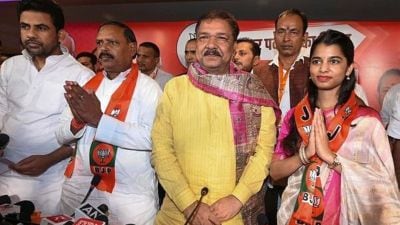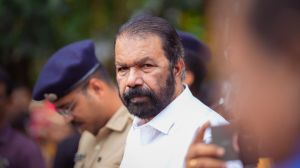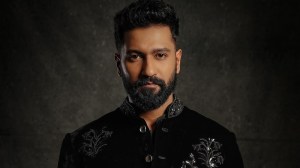Priya Kumari Shukla is a Senior Copy Editor in the Indian Express (digital). She contributes to the UPSC Section of Indian Express (digital) and started niche initiatives such as UPSC Key, UPSC Ethics Simplified, and The 360° UPSC Debate. The UPSC Key aims to assist students and aspirants in their preparation for the Civil Services and other competitive examinations. It provides valuable guidance on effective strategies for reading and comprehending newspaper content. The 360° UPSC Debate tackles a topic from all perspectives after sorting through various publications. The chosen framework for the discussion is structured in a manner that encompasses both the arguments in favour and against the topic, ensuring comprehensive coverage of many perspectives. Prior to her involvement with the Indian Express, she had affiliations with a non-governmental organisation (NGO) as well as several coaching and edutech enterprises. In her prior professional experience, she was responsible for creating and refining material in various domains, including article composition and voiceover video production. She has written in-house books on many subjects, including modern India, ancient Indian history, internal security, international relations, and the Indian economy. She has more than eight years of expertise in the field of content writing. Priya holds a Master's degree in Electronic Science from the University of Pune as well as an Executive Programme in Public Policy and Management (EPPPM) from the esteemed Indian Institute of Management Calcutta, widely recognised as one of the most prestigious business schools in India. She is also an alumni of Jamia Milia Islamia University Residential Coaching Academy (RCA). Priya has made diligent efforts to engage in research endeavours, acquiring the necessary skills to effectively examine and synthesise facts and empirical evidence prior to presenting their perspective. Priya demonstrates a strong passion for reading, particularly in the genres of classical Hindi, English, Maithili, and Marathi novels and novellas. Additionally, she possessed the distinction of being a cricket player at the national level. Qualification, Degrees / other achievements: Master's degree in Electronic Science from University of Pune and Executive Programme in Public Policy and Management (EPPPM) from Indian Institute of Management Calcutta ... Read More
UPSC Key: Kashi Tamil Sangamam, Twin test of Bail and Startup India
Why US sanctions on Russia’s shadow fleet is relevant to the UPSC exam? What is the significance of topics such as Growing plants in space, INS Surat, INS Nilgiri, and INS Vaghsheer on both the preliminary and main exams? You can learn more by reading the Indian Express UPSC Key for January 16, 2025.
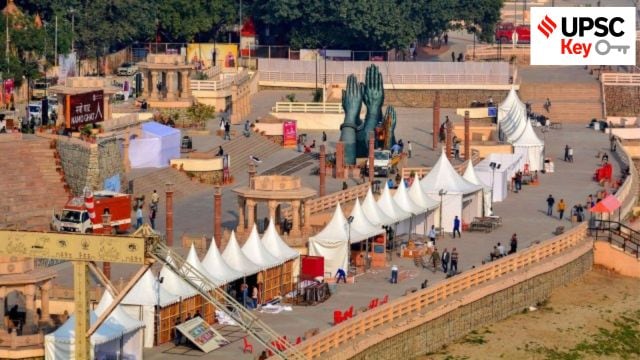 UPSC Key January, 2025: Here's what you should be reading from the January 16, 2025 edition of The Indian Express
UPSC Key January, 2025: Here's what you should be reading from the January 16, 2025 edition of The Indian Express Important topics and their relevance in UPSC CSE exam for January 16, 2025. If you missed the January 15, 2025 UPSC CSE exam key from the Indian Express, read it here
FRONT PAGE
Israel, Hamas reach deal on ceasefire, release of hostages
Syllabus:
Preliminary Examination: Current events of national and international importance.
Main Examination:
• General Studies II: Bilateral, regional and global groupings and agreements involving India and/or affecting India’s interests.
• General Studies IV: Ethical issues in international relations
What’s the ongoing story: Israel and Hamas reached a ceasefire deal to halt fighting in the Gaza Strip and exchange Israeli hostages for Palestinian prisoners, , mediator Qatar announced on Wednesday (15th Jan 2025)
Key Points to Ponder:
• Ceasefire agreement between Israel and Hamas-what you know till now?
• How Ceasefire agreement between Israel and Hamas will impact regional stability in the Middle East?
• Evaluate the role of humanitarian aid in post-conflict recovery in regions like Gaza.
• Discuss the socio-economic impact of prolonged hostilities in Gaza on the civilian population.
• Know the historical background of Israel-Palestine Conflict
Key Takeaways:
• The deal, set to be formally approved by Israel’s cabinet on Thursday (16th Jan 2025), is scheduled to commence on Sunday and last for 42 days.
• Under the agreement, Hamas will release hostages in exchange for Palestinian detainees held in Israeli prisons, as confirmed by Qatar’s prime minister, Sheikh Mohammed bin Abdulrahman Al Thani, during a press briefing in Doha.
• The agreement follows months of intermittent negotiations mediated by Egypt and Qatar, with support from the United States, and bring end to war that has disrupted the Middle East.
• The deal also outlines the return of displaced Palestinians to their homes in Gaza, the facilitation of medical travel for those injured or sick due to the conflict, and the repositioning of Israeli forces along the Gaza border.
• US President Joe Biden confirmed that American hostages would be among those released.
• The deal includes a six-week initial ceasefire phase, a gradual withdrawal of Israeli forces, the release of hostages held by Hamas, and the release of Palestinian detainees held by Israel.
• According to reports by Associated Press, Qatari and Hamas officials have stated that a last-minute dispute in the ceasefire talks between Israel and Hamas has been resolved.
• Israel announced late on Wednesday that Hamas had attempted to alter the agreed-upon security arrangements along Gaza’s border with Egypt, a proposal Israel strongly rejected.
• The official said Hamas had raised objections to agreed-upon arrangements for the Philadelphi corridor – a strategic strip of land along Gaza’s border with Egypt, Associated Press reported.
• Qatar’s prime minister, who has been mediating the talks, held separate meetings with both Hamas and Israeli delegations. According to reports, the issue was resolved shortly after these meetings.
Do You Know:
• The deal, finalised in Doha by US, Israeli, Egyptian, and Qatari negotiators, is reported to involve a phased ceasefire, largely following a truce agreement first set out in May last year.
• The first stage, lasting 42 days, sees Hamas agreeing to release 33 hostages in exchange for Palestinian prisoners.
—During this phase, all fighting would pause, and Israeli forces would withdraw from Gaza’s cities to a buffer zone at the edge of the strip. The specifics of this zone are set out in signed maps from both sides.
—About 90% of Gaza’s 2.3 million people have been displaced, but would be allowed to move freely between the south and north of the territory, which Israel has divided with a military corridor.
—An increased flow of aid into Gaza is expected, though the details of this remain unclear.
• The second phase would be more comprehensive, with the return of the remaining hostages and the release of an equivalent number of Palestinian prisoners, alongside a full Israeli withdrawal from Gaza.
—Israeli Prime Minister Netanyahu has been reluctant to agree to this step until now, and specifics of this phase are subject to further negotiations, which are set to start after 16 days.
• The third phase would involve the exchange of the bodies of deceased hostages and Hamas members, and a reconstruction plan for Gaza. However, plans for the future governance of the strip remain unclear.
• Israeli forces launched an invasion of Gaza after Hamas-led gunmen breached security barriers and entered Israeli communities on 7 October 2023, killing 1,200 soldiers and civilians and abducting over 250 Israeli and foreign hostages.
• Israel’s campaign in Gaza has resulted in over 46,000 deaths, according to figures from Gaza’s health ministry, and has reduced the narrow coastal strip to rubble. Hundreds of thousands of people are enduring the winter cold in tents and makeshift shelters.
Other Important Articles Covering the same topic:
📍Celebrations, relief on the streets
UPSC Previous Year Prelims Question Covering similar theme:
1. The term “two-state solution” is sometimes mentioned in the news in the context of the affairs of (2018)
(a) China
(b) Israel
(c) Iraq
(d) Yemen
Nuclear deal in mind, US removes curbs on BARC and two others
Syllabus:
Preliminary Examination: Current events of national and international importance.
Mains Examination: General Studies II: Bilateral, regional and global groupings and agreements involving India and/or affecting India’s interests.
What’s the ongoing story: Just over a week after US National Security Advisor Jake Sullivan said Washington was finalising steps to remove “long-standing regulations that have prevented civil nuclear cooperation between India’s leading nuclear entities and US companies”, the US Bureau of Industry and Security (BIS) removed three Indian nuclear entities — Bhabha Atomic Research Centre (BARC), Indira Gandhi Centre for Atomic Research (IGCAR) and the Indian Rare Earths Limited (IREL) — from its ‘Entity List’.
Key Points to Ponder:
• Discuss the significance of the removal of US export controls on Indian entities like BARC in the context of the Indo-US strategic
partnership.
• How does the recent removal of curbs will help in strengthening bilateral relations between India-US?
• What are the implications of such moves by the US for India’s position in global non-proliferation and nuclear technology regimes?
• How eased export restrictions will Impact India’s nuclear and space technology sectors?
• Role of multilateral agreements like the NPT and NSG in shaping global nuclear commerce-Know in detail
Key Takeaways:
• “The removal of Indian entities Indian Rare Earths, Indira Gandhi Centre for Atomic Research (IGCAR), and Bhabha Atomic Research Centre (BARC) will support US foreign policy objectives by reducing barriers to advanced energy cooperation, including joint research and development and science and technology cooperation, towards shared energy security needs and goals,” the BIS said in a statement.
• “The US and India share a commitment to advancing peaceful nuclear cooperation and associated research and development activities, with strengthened science and technology cooperation over the past several years that has benefitted both countries and their partner countries around the world,” it said.
• Speaking at IIT-Delhi on January 6, Sullivan, who met PM Narendra Modi, NSA Ajit Doval and External Affairs Minister S Jaishankar during his visit, had signalled the removal of restrictions. The Indian Express had reported that BARC, IGCAR and IREL — all government-run institutions — may be removed from the US ‘Entity List’.
Do You Know:
• The US Entity List is a list of foreign individuals, businesses and organisations that are subject to export restrictions and licensing requirements for certain goods and technologies. The list — compiled by the BIS of the US Department of Commerce — is ostensibly used to prevent unauthorised trade in items that could be diverted to terrorism, weapons of mass destruction (WMD) programmes, or other activities that are perceived by the US as going against its foreign policy or national security interests.
• The decision came on a day when the US Department of Commerce added 11 Chinese entities to its ‘Entity List’ “for activities contrary to US national security and foreign policy interests”.
• The bigger impediment holding up investments are now two legal barriers on both sides. On the American side, it is the ‘10CFR810’ authorisation (Part 810 of Title 10, Code of Federal Regulations of the US Atomic Energy Act of 1954), which gives US nuclear vendors the ability to export equipment to countries such as India under some strict safeguards, but does not permit them to manufacture any nuclear equipment or perform any nuclear design work here. And on the Indian side, it is the Civil Liability for Nuclear Damage Act, 2010.
Other Important Articles Covering the same topic:
📍US eases curbs to push n-deal. Will incoming Trump administration take a cue?
GOVT & POLITICS
Pradhan: Kashi Tamil Sangamam in Feb on Rishi Agastya theme
Syllabus:
Preliminary Examination: Current events of national and international importance.
Mains Examination:
• General Studies I: Indian culture will cover the salient aspects of Art Forms, literature and Architecture from ancient to modern times.
• General Studies II: Government policies and interventions for development in various sectors and issues arising out of their design and implementation.
What’s the ongoing story: Union Education Minister Dharmendra Pradhan on Wednesday announced that the main theme of the third edition of Kashi Tamil Sangamam, a cultural exchange programme scheduled to be held from February 14 to 25, will be Rishi Agastya.
Key Points to Ponder:
• What is the Kashi Tamil Sangamam?
• What is the history of ties between Kashi and Tamil Nadu?
• What is Ek Bharat Shreshtha Bharat’ initiative?
• Kashi-Tamil Sangamam’ programme is a part of the ‘Ek Bharat Shreshtha Bharat’ initiative-True or false?
• How do initiatives like the Kashi Tamil Sangamam strengthen India’s cultural unity?
• Analyse the role of government initiatives like Ek Bharat Shreshtha Bharat in promoting inter-state cultural exchanges.
• Discuss the potential socio-economic benefits of cultural exchange programs like the Kashi Tamil Sangamam for local communities in Kashi and Tamil Nadu.
Key Takeaways:
• A total of 1,200 participants are expected this year. Of them, 200 will be Tamil students from central institutions. Farmers, teachers, writers, small entrepreneurs, innovators, and women from self-help groups — all from Tamil Nadu — will also be part of the event.
• An online registration portal has been launched, and the selection of participants will be done through a quiz. Seminars and cultural programmes will be held during the programme. Participants will visit Varanasi, Prayagraj, and Ayodhya, and with the event coinciding with the Maha Kumbh, they will also visit the Kumbh.
Do You Know:
• The first edition of the programme, which is organised by the Ministry of Education, was held in 2022, and it is meant to mark the bond in terms of civilisation and culture between Varanasi and Tamil Nadu.
• Legend has it that King Parakrama Pandya, ruler of the region around Madurai in the 15th century, wanted to build a grand temple dedicated to Lord Shiva. He travelled all the way to Kashi to bring back the lingam for his temple.
While returning, he stopped to rest under a tree. When he tried to continue his journey, the cow carrying the lingam refused to budge from its spot. Parakrama Pandya understood this to be the Lord’s wish, and installed the lingam there, a place that today is known as Sivakasi. For devotees who could not visit Kashi, the Pandyas also built the Kasi Viswanathar Temple in what is today Tenkasi in southwestern Tamil Nadu.
• Dr Vinay Kumar of the Department of Ancient Indian History, Culture and Archaeology, at Banaras Hindu University (BHU), the connection between Kashi and the Tamil region is deep and old. “Much later, another king, Adhivir Ram Pandyan, after returning from a pilgrimage to Kashi, constructed another Shiva temple in Tenkasi in the 19th century,” Dr Kumar said.
There’s more: “Sant Kumara Gurupara from Thoothukudi district had negotiated with the princely state of Kashi to get a place for the consecration of Kedarghat and Vishvesvaralingam in Varanasi. He also composed Kashi Kalambagam, a collection of grammar poems on Kashi,” Dr Kumar said.
• Ek Bharat Shreshtha Bharat programme aims to enhance interaction & promote mutual understanding between people of different states/UTs through the concept of state/UT pairing. The states carry out activities to promote a sustained and structured cultural connect in the areas of language learning, culture, traditions & music, tourism & cuisine, sports and sharing of best practices, etc.
• States/UTs in India have been paired with each other for a fixed time period. The paired States/UTs signed MoUs with each other, delineating a set of activities that they would carry out. An activity calendar for each pair was prepared through mutual consultation, paving the way for a systematic process of mutual engagement. Such interaction between different segments of the population of each pair of States /UTs at the cultural level, generated the vibrance of understanding & appreciation amongst the people and forged mutual bonding, thus securing an enriched value system of unity in the nation.
Other Important Articles Covering the same topic:
UPSC Practice Prelims Question Covering similar theme:
2. What is the primary objective of the Kashi Tamil Sangamam?
(a) To promote trade between North and South India
(b) To celebrate the cultural and civilizational ties between Tamil Nadu and Kashi (Varanasi)
(c) To commemorate India’s freedom struggle
(d) To promote the Sanskrit language
Train to Kashmir soon as last leg of project gets safety nod
Syllabus:
Preliminary Examination: Economic and Social Development
Main Examination: General Studies III: Infrastructure: Energy, Ports, Roads, Airports, Railways etc.
What’s the ongoing story: The rail link to Kashmir is now ready to commence operations, said officials Wednesday, as the Commissioner of Railway Safety (CRS) greenlit the ambitious project’s final leg — the 17-km Katra-Reasi section.
Key Points to Ponder:
• What were the geographical and logistical challenges faced during the construction of the Udhampur-Srinagar-Baramulla Rail Link (USBRL) project?
• How infrastructure projects like USBRL is a gamechanger in fostering regional integration and development in Jammu and Kashmir?
• Highlight the importance of multi-stakeholder cooperation in implementing large-scale infrastructure projects like the USBRL.
• How USBRL project in Jammu and Kashmir will contribute to tourism, trade, and employment?
Key Takeaways:
• The inspection by the CRS, the railway safety audit body under the Ministry of Civil Aviation, is the final check before train operations can begin.
• “For the Katra-Reasi stretch of the Udhampur-Srinagar-Baramulla rail link, a detailed investigation was conducted, especially because of its topography and terrain, and authorisation was granted to the Northern Railway. There was no lacuna found in the project, the infrastructure is outstanding. Now, the entire link is getting connected and the dream of a train to Kashmir will come true soon,” said Dinesh Chand Deshwal, CRS, Northern Circle.
• Due to security concerns, trains will run only during the day on this route, said a source.
• Railway ministry officials said the CRS on Tuesday also approved a maximum speed of 85 km per hour for trains running between Shri Vaishno Devi Dham Katra and Reasi stations.
• DEMUs and MEMUs are self-propelled train rakes — that is, they have no separate locomotives — that run on short- and medium-distance routes in India.
Do You Know:
• The Kashmir line, or the Udhampur-Srinagar-Baramulla project, was sanctioned in 1994-95. The first three phases were completed by 2014. Trains have been running between Banihal and Baramulla in the Kashmir valley, and between Jammu, Udhampur and Katra in Jammu region. But the 111-km Katra-Banihal section was the most difficult to construct owing to the challenging terrain.
• A 48-km section from Banihal to Sangaldan was commissioned in February 2024 and the 46-km Sangaldan-Reasi section received CRS authorisation on July 1.
• Katra to Reasi is the final leg that has been constructed, and has now received the CRS approval.
• The Banihal-Katra section contains 97 km of tunnels and 7 km of bridges. “The toughest challenge in the project was to give foundation support to the world’s highest arch bridge (359 metres) on the Chenab River.
• It was achieved by a rock-bolting method using 30,000 tonnes of steel. The other main challenge was to build India’s first cable-stayed bridge on the Anji River. The two other bridges on the section are Reasi and Bakkal bridges.
• The longest tunnel in this section of the Udhampur-Srinagar-Baramulla Rail Link project is 12.77 km long.
• Officials said cameras have been placed every 50 metres in tunnels to keep an eye on operational safety. The Railways has also built 215 km of roads in the region to access the project sites.
• The first train that will run on the stretch will be an eight-coach Jammu-Kashmir Vande Bharat train, designed to operate in temperatures as low as -20°C.
Other Important Articles Covering the same topic:
📍Three decades of wait, plus a few fears, ride on the train to Kashmir
UPSC Practice Prelims Question Covering similar theme:
3. Which tunnel in the USBRL project is the longest rail tunnel in India?
(a) Pir Panjal Tunnel
(b) Chenab Tunnel
(c) Banihal Tunnel
(d) Konkan Tunnel
EXPRESS NETWORK
PMLA: SC pulls up ED for saying rigours of bail apply to women
Syllabus:
Preliminary Examination: Economic and Social Development
Mains Examination: General Studies III: Money-laundering and its prevention
What’s the ongoing story: Irked by the Enforcement Directorate’s submission that the rigours of getting bail in cases under the Prevention of Money Laundering Act (PMLA) would apply equally to women accused, the Supreme Court on Wednesday cautioned that it “will not tolerate” submissions contrary to the law.
Key Points to Ponder:
• What is Section 45 (1) of the PMLA?
• What are the Bail Conditions defined under Prevention of Money-Laundering Act, 2002 (PMLA)?
• What was the key highlight in the amendment of Section 45 of the Prevention of Money Laundering Act (PMLA), 2002?
• What was that ‘Twin test’ of Bail?
• ‘Section 45 is a drastic provision which turns on its head the presumption of innocence which is fundamental to a person accused of any offence’-Decode the quote
• Name all the statutory provisions in India that provide special considerations for women in bail proceedings.
• What are the challenges in balancing the rigorous application of laws like PMLA with constitutional guarantees of equality and justice?
• Directorate of Enforcement (ED)-Role and Function
• Directorate of Enforcement (ED) comes under which Ministry or Organisation?
Key Takeaways:
• “We will not tolerate conduct on the part of the Union of India to make submissions contrary to statute,” a bench of Justice A S Oka and Justice Ujjal Bhuyan said while hearing a bail plea filed by Shashi Bala, arrested by the ED in connection with an investigation allegedly involving the Lucknow-based Shine City Group of companies.
• What annoyed the bench about the submission was that it went against the spirit of PMLA section 45(1), which allows courts to exempt women accused from the rigours of the bail clause.
• On December 20, 2024, the court expressed its displeasure over the ED counsel’s submission that the bail clause would apply equally to women without any exception.
• On Wednesday, Solicitor-General Tushar Mehta apologised to the court for the submission and said the “confusion” happened due to some “miscommunication”. He added that all that was sought to be argued was that the accused woman was the kingpin of the money-laundering operation, which defrauded hundreds of investors out of crores of their life savings and therefore should not be granted bail.
Do You Know:
• In Nikesh Tarachand Shah vs Union of India (2017), the two-judge bench of Justices Rohinton Nariman and Sanjay Kishan Kaul, had declared the ‘twin test’ of bail under PMLA as unconstitutional since it was manifestly arbitrary.
• Before application of a section which makes drastic inroads into the fundamental right of personal liberty guaranteed by Article 21 of the Constitution of India, we must be doubly sure that such provision furthers a compelling State interest for tackling serious crime. Absent any such compelling State interest, the indiscriminate application of the provisions of Section 45 will certainly violate Article 21 of the Constitution. Provisions akin to Section 45 have only been upheld on the ground that there is a compelling State interest in tackling crimes of an extremely heinous nature,” the bench had said.
• It had said that stringent bail conditions can be imposed in exceptional circumstances such as anti-terrorism laws, but cannot be manifestly arbitrary.
• It also expounded the theory of “soft state” which the Court said is used to “describe a nation which is not capable of preventing the offence of money laundering”. The Court relied on Article 39 of the Constitution, part of the Directive Principles of State Policy that mandates the State to prevent concentration of wealth, to uphold the stringent bail conditions under PMLA.
Other Important Articles Covering the same topic:
📍Explained: Supreme Court overrides its own 2017 ruling to justify ‘drastic’ PMLA provision for bail
UPSC Practice Prelims Question Covering similar theme:
4. What is the primary purpose of granting bail in a judicial system?
(a) To ensure punishment for the accused
(b) To prevent overcrowding in prisons
(c) To uphold the presumption of innocence until proven guilty
(d) To ensure deterrence against crime
THE EDITORIAL PAGE
Syllabus:
Preliminary Examination: Current events of national and international importance.
Main Examination: General Studies II: Government policies and interventions for development in various sectors and issues arising out of their design and implementation.
What’s the ongoing story: Amitabh Kant Writes: Favourable policies, a thriving culture of innovation, and collaborative efforts across sectors provide the foundation for scaling startups into global enterprises.
Key Points to Ponder:
• How Startup India is creating a supportive ecosystem for startups in India?
• Why regulatory reforms in promoting innovation and entrepreneurship in India is required?
• How can bureaucratic and compliance hurdles for startups should be addressed?
• What are the key drivers of India’s startup ecosystem?
• How can emerging technologies like AI, blockchain, and IoT accelerate growth in Startups ecosystem?
• “Startups are pivotal for achieving a $5 trillion economy in India.” Critically examine this statement with examples.
Key Takeaways:
Amitabh Kant Writes
• India’s startup ecosystem has witnessed extraordinary growth, transforming from a fledgling stage to becoming the world’s third-largest hub for innovation and entrepreneurship. With over 1,30,000 recognised startups today — up from approximately 400 in 2015-16 — India’s progress is remarkable.
• India stands at the threshold of a technological revolution, presenting immense opportunities in areas such as artificial intelligence (AI), machine learning (ML), big data, energy transition, electric vehicles (EVs), quantum computing, genomics, 3D printing, robotics, drones, and space exploration. The government has actively fostered this progress through initiatives like the National Quantum Mission, India AI Mission, and Semiconductor Mission, alongside allocating Rs 1 lakh crore for research and development (R&D).
• Indian startups, particularly in deep tech sectors, face challenges in accessing patient capital. The Fund of Funds for Startups (FFS), launched in 2016, has been a game changer. With Rs 11,688 crore committed through 151 AIFs, it has catalysed a capital pool of Rs 81,000 crore, creating a significant multiplier effect.
• India needs a specialised fund of funds for deep tech startups that require long-term investments. Increasing domestic capital sources is also essential. Although Indian startups raised over $12 billion in 2024, about 75 per cent of this funding came from international sources. Large domestic institutions like insurance companies and pension funds can allocate a portion of their surpluses to support startups, while family offices and businesses should take on more active roles as angel investors.
• India’s premier educational institutions, including the IITs, IIMs, and IIITs, are integral to the startup ecosystem, producing skilled professionals and fostering innovation.
• India produces approximately 24,000 PhD graduates annually, driving advancements in science and engineering. However, the country paid $14.3 billion in IPR royalties in 2024, while earning only $1.5 billion, highlighting a significant gap. Greater innovation and breakthroughs are essential to bridge this gap.
• India’s startup ecosystem is no longer confined to metro cities like Bengaluru, Mumbai, and Delhi. Nearly 50 per cent of the country’s startups originate from Tier II and Tier III cities, including emerging hubs like Indore, Jaipur, and Ahmedabad. With nearly half of India’s urban population living in smaller cities, these regions offer immense potential for growth. Tech companies are increasingly establishing operations in cities such as Chandigarh, Visakhapatnam, and Ahmedabad. Supporting these regional hubs with infrastructure, educational opportunities, and inclusivity — especially by increasing women’s representation in leadership roles — will unlock untapped talent and drive innovation.
Do You Know:
• Launched on 16th January, 2016, the Startup India Initiative has rolled out several programs with the objective of supporting entrepreneurs, building a robust startup ecosystem and transforming India into a country of job creators instead of job seekers. These programs are managed by a dedicated Startup India Team, which reports to The Department for Promotion of Industry and Internal Trade (DPIIT)
• This year, National Startup Day in India is being observed on January 16, 2025, falling on a Thursday. National Startup Day is an annual observance in India dedicated to recognising and promoting the vibrant startup ecosystem.
This day aims to mark the spirit of entrepreneurship to boost economic growth, innovation, and job creation. Additionally, it acts as a reminder of the government of India’s dedication to encouraging and observing the startup community’s noteworthy contributions to the progress of the country.
• National Startup Day aims to create a supportive environment for entrepreneurial ventures while celebrating startups’ crucial role in stimulating economic development and job creation.
• This year, to commemorate the day, Udyamotsav 2025 is scheduled for January 16, 2025, as part of the National Startup Week celebrations.
Other Important Articles Covering the same topic:
📍Making India a start-up nation
UPSC Practice Prelims Question Covering similar theme:
5. What does venture capital mean? (2014)
(a) A short-term capital provided to industries
(b) A long-term start-up capital provided to new entrepreneurs
(c) Funds provided to industries at times of incurring losses
(d) Funds provided for replacement and renovation of industries
ECONOMY
New US AI export law excludes India from its closest allies. What could be its impact?
Syllabus:
Preliminary Examination: Current events of national and international importance.
Main Examination: General Studies II: Effect of policies and politics of developed and developing countries on India’s interests.
What’s the ongoing story: Days before demitting office, the Joe Biden administration has released an expansive regulatory framework on the export of artificial intelligence (AI) hardware such as graphics processing units (GPUs), which could have far-reaching consequences for India’s AI ambitions.
Key Points to Ponder:
• Discuss the strategic implications of India’s exclusion from the US AI export rule benefits.
• How this decision might affect India-US relations in technology and security domains?
• Highlight the importance of international collaboration in AI development.
• How can India position itself as a global AI hub despite challenges like exclusion from key partnerships?
• Analyse the role of multilateral agreements in promoting equitable access to emerging technologies like AI.
• Do think that India should advocate multilateral agreements in promoting equitable access to emerging technologies like AI?
• Examine the potential economic and technological impact of the US AI export restrictions on India’s AI ecosystem.
Key Takeaways:
• In an “interim final rule”, titled ‘Framework for Artificial Intelligence Diffusion,’ the US government has proposed to create three tiers of countries with specific restrictions on the export of AI chips and GPUs for each.
• India is in the middle tier of this classification and will face some restrictions on the number of GPUs it can import from the United States. That could impact the ongoing process of procuring 10,000 GPUs to build up India’s domestic AI computing capacity.
• The first tier, which includes 18 of the closest allies of the United States, has almost no export restrictions.
• The third tier has countries of concern to the US, to which the export of technology is all but prohibited.
• The rules seem intended to keep advanced chips and AI models under the control of the US and its closest allies. Their enforcement, however, will depend on the incoming administration of President Donald Trump.
• Apart from this tiered classification, the law also envisions a special review called the General Validated End User. This list includes only two countries: India and China.
Indian companies that get this authorisation can use the exported items for civilian and military purposes, but not for nuclear use. Chinese companies with this authorisation can only use the technology for civilian use.
Do You Know:
The three tiers of countries are:
• TIER 1: The first tier comprises 18 of the closest allies of the US: Australia, Belgium, Canada, Denmark, Finland, France, Germany, Ireland, Italy, Japan, the Netherlands, New Zealand, Norway, South Korea, Spain, Sweden, Taiwan, and the United Kingdom.
—US companies can deploy as much computing power as they like in these countries, and the security requirements are relatively straightforward.
• TIER 2: The vast majority of countries in the world, including India, are in this category. These countries will face a limit on how much computing power they can import from American companies, unless that computing power is hosted in trusted and secure environments.
—There are caps on the levels of computing power that can go to each of these countries: roughly around 50,000 advanced AI chips through 2027, although that can double if the state reaches an agreement with the US.
—India is trying to procure 10,000 GPUs for its IndiaAI Mission, and it remains to be seen how this classification could impact large companies looking to build large AI data centres. Smaller firms are not likely to be impacted.
• TIER 3: Export of US technology to these countries – including Russia, China, Libya, North Korea etc. – will be almost prohibited.
Other Important Articles Covering the same topic:
📍US tightens its grip on AI chip flows across the globe
UPSC Practice Prelims Question Covering similar theme:
6. Which US legislation governs the control of sensitive technology exports, including AI?
(a) Export Control Reform Act (ECRA)
(b) Foreign Corrupt Practices Act (FCPA)
(c) General Data Protection Regulation (GDPR)
(d) Trade Expansion Act
EXPLAINED
How US curbs on Russia shadow fleet may impact India oil imports
Syllabus:
Preliminary Examination: Current events of national and international importance.
Main Examination: General Studies II: Effect of policies and politics of developed and developing countries on India’s interests.
What’s the ongoing story: The outgoing administration in the United States announced sweeping new curbs on Russia’s oil trade last week, imposing sanctions on 183 tankers, the bulk of the so-called “shadow fleet” that has kept Russian oil flowing to consumers such as India and China.
Key Points to Ponder:
• Discuss the strategic implications of the US sanctions on Russia’s shadow fleet for India’s energy security and foreign policy.
• How geopolitical developments, such as sanctions on Russia, impact India’s relationships with major oil-exporting nations?
• What role international institutions like OPEC and IEA plays in stabilizing global oil markets during geopolitical crises?
• Evaluate the potential of renewable energy as a long-term solution to reduce India’s dependence on imported crude oil.
• Discuss the economic impact of global crude oil price volatility on India, with a focus on inflation, fiscal deficit, and balance of payments.
Key Takeaways:
• The sanctions also targeted Russian oil companies Gazprom Neft and Surgutneftegas, insurance companies, and other entities involved in the country’s oil sector and trade.
• The sanctions, the biggest against Russia’s oil shipping sector since the invasion of Ukraine in February 2022, will impact India, given that Russia is its biggest source market for crude oil.
• Specific fallouts will depend on variables including the Russian response in terms of pricing and delivery, as well as the policy direction the incoming Donald Trump administration takes on Russia and the war in Ukraine.
• The Kremlin has said that the US sanctions could destabilise global markets, and Moscow would do everything possible to minimise their impact.
• Government sources said Indian refiners will accept oil cargoes on the sanctioned vessels booked up to January 10 – when the US sanctions were announced – which can be delivered until March 12. This wind-down period has been provided to enable existing contracts for Russian oil to be fulfilled.
• Data from commodity freight analytics firm Kpler show 102 of the 183 sanctioned tankers transported Russian crude to either India or China or both at least once in 2024.
Do You Know:
• India is not part of the sanctions regime against Russia, but it has, like most other countries, generally tried to not fall foul of them in order to avoid secondary US sanctions. Ship tracking data show the vast majority of oil tankers sanctioned earlier by the US have not been used since.
• Industry experts expect the India-Russia oil trade to be impacted in the near term beyond the wind-down period. This, however, is
unlikely to disrupt overall oil imports – enough supply is available from other oil exporting countries.
• India, the world’s third-largest consumer of crude oil, depends on imports to meet more than 85% of its requirement. Russia was a marginal supplier to India before the war in Ukraine; it is now India’s biggest supplier of crude, after Moscow began to offer significant discounts to offset the impact of the West shunning its oil. In 2024, Russian oil accounted for nearly 38% of India’s total oil imports, according to tanker data.
• According to Kpler’s analysis, the sanctioned tankers together handled more than 530 million barrels of Russian crude exports last year – of which around 300 million barrels were shipped to China, and the bulk of the remaining exports were to India.
• While Russia would now want to rapidly increase the number of non-sanctioned tankers at its disposal, industry experts said this mammoth exercise would take time to progress.
Other Important Articles Covering the same topic:
📍US sanctions on Russian oil tankers to hit imports; ‘Trump’s stance key
UPSC Practice Prelims Question Covering similar theme:
7. India’s energy security heavily relies on crude oil imports. What percentage of India’s crude oil needs is met through imports?
(a) Around 50%
(b) Around 60%
(c) Around 80%
(d) Over 85%
Syllabus:
Preliminary Examination: Current events of national and international importance.
Main Examination: General Studies III: Various Security forces and agencies and their mandate.
What’s the ongoing story: Three frontline combatants — INS Nilgiri, lead ship of the Project 17A stealth frigate class, INS Surat, fourth and final ship of the Project 15B stealth destroyer class, and INS Vaghsheer, sixth and final submarine of the Scorpene-class project — were commissioned in the Indian Navy at the Naval Dockyard in Mumbai on Wednesday.
Key Points to Ponder:
• Discuss the strategic importance of strengthening the Indian Navy with advanced vessels like INS Surat, INS Nilgiri, and INS Vaghsheer in the context of India’s maritime security challenges.
• Know India’s role in ensuring freedom of navigation and maritime security in the Indo-Pacific region. How does a robust naval fleet contribute to this objective.
• Highlight the significance of indigenous defense manufacturing projects like Project 15B and Project 75 in enhancing India’s naval capabilities.
• Discuss the importance of stealth technology and advanced weapon systems in modern naval warfare.
• How stealth technology enhance the operational capabilities of vessels like INS Nilgiri and INS Vaghsheer?
Key Takeaways:
• Prime Minister Narendra Modi on Wednesday commissioned three pivotal naval assets — INS Surat, INS Nilgiri, and INS Vaghsheer — at the Naval Dockyard in Mumbai on Wednesday.
• The commissioning of these advanced naval combatants marks a significant milestone in India’s defence capabilities, reinforcing the nation’s ambition to become a global leader in defence while bolstering its pursuit of self-reliance, as stated by PM Modi.
• The Indian Navy described the induction of these three combatants as a historic event.
• The Indian Navy has in recent times saved hundreds of lives and secured national and international cargo worth thousands of crores, increasing global trust in India, the Indian Navy, and the Coast Guard, the Prime Minister said.
• The PM emphasised the dual importance of commissioning of the three ships from both the military and economic perspective.
Do You Know:
• INS Nilgiri : The Nilgiri-class stealth frigate, built under the codename Project 17A, is a follow-on vessel of the Shivalik class or Project 17 frigates that are currently in service.
—INS Nilgiri is the first of seven frigates in Project 17A being built by Mazagon Dock Shipbuilders Limited (MDL), Mumbai, and Garden Reach Shipbuilders and Engineers (GRSE), Kolkata.
—This class of ships has an “integrated construction” philosophy, which involves extensive pre-outfitting at the block stages to reduce overall building periods.
—The multi-mission frigates are capable of operating in a “blue water” environment — in the deep seas far from the coast — and deal with both conventional and non-conventional threats. With their versatile weapons and capabilities, these ships can play a crucial role in anti-surface, anti-air, and anti-submarine warfare.
• INS Surat: The fourth and final stealth guided missile destroyer under Project 15B follows INS Visakhapatnam, INS Mormugao, and INS Imphal, which were commissioned over the past three years.
—INS Surat is the Indian Navy’s first Al (artificial intelligence) enabled warship, which will utilise indigenously developed Al solutions to enhance its operational efficiency manifold.
—Over the past decade, guided missile destroyers of the Kolkata class built under the project codenamed 15A — INS Kolkata, INS Kochi, and INS Chennai — have been commissioned into the Navy.
—To build an advanced variant of the Kolkata class, a contract for the construction of four more guided missile destroyers under the project codenamed 15B was signed in January 2011.
• INS Vaghsheer: INS Vaghsheer is the sixth and final submarine of the modern stealthy Kalvari class built under Project 75. The design of the Kalvari class of submarines is based on the Scorpene class designed and developed by the French defence major Naval Group (formerly DCNS), and the Spanish state-owned entity Navantia.
—They have diesel electric transmission systems, and are primarily “attack” or “hunter-killer” submarines — which means they are designed to target and sink adversary naval vessels.
Other Important Articles Covering the same topic:
📍3 warships join Navy, PM says India key to global security
How and why are plants grown in space: Takeaways from ISRO’s success
Syllabus:
Preliminary Examination: General Science.
Main Examination: General Studies III: Achievements of Indians in science & technology; indigenization of technology and developing new technology.
What’s the ongoing story: The lobia (black-eyed pea) seeds that the Indian Space Research Organisation (ISRO) sent to space on December 30 as a part of its Compact Research Module for Orbital Plant Studies (CROPS) germinated last week.
Key Points to Ponder:
• What is Microgravity?
• What is the impact of microgravity on biological processes like plant growth?
• What is Compact Research Module for Orbital Plant Studies?
• Why ISRO’s experiment of growing cowpea seeds in space is significant?
• How can this research contribute to the future of space exploration?
• Growing plants in space-Know challenges, pros and cons
Key Takeaways:
• As humans venture out on lengthy space missions to colonise celestial bodies like Mars and the Moon, space-grown plants can provide a sustainable food source. With minimal scope of restocking supplies, astronauts cannot simply rely on a limited stock of multivitamins during missions that may go on for years. Besides, pre-packaged vitamins break down and lose their nutritive value over long periods of time.
• The most significant challenge is microgravity, the condition in which people or objects appear to be weightless.
The lack of gravity precludes plants’ roots from growing downwards, in addition to making nutrient delivery a difficult task. Since water tends to cling to any surface it touches in microgravity, when sprayed onto the base of a plant, it does not trickle down to the roots where it would be absorbed.
• Plants grown in space also need to be protected from the high levels of radiation that can damage their DNA and hinder growth, and insulated from temperature fluctuations — often hundreds of degrees — that are normal in space, Pandey said.
Light conditions, especially in the outer Solar System where sunlight is scarce, pose another challenge. Without light, photosynthesis stops, and plants begin to consume more oxygen than they produce.
Do You Know:
• CROPS stands for Compact Research Module for Orbital Plant Studies which is an unmanned experimental module designed to develop ISRO’s capabilities for growing and sustaining plants in space.
• CROPS first mission (CROPS – 1) is designed to demonstrate germination of a seed and growth of plant up to two leaves stage in space. It is an airtight container of diameter 300mm and height 450mm simulating earth like environment in space except gravity.
• A neutral clay soil medium in pellet form having high porosity to absorb and retain water is used in CROPS – 1 for the seed to spread its roots. The soil medium can be sterilized by heating at high temperature to neutralize microbes, fungus, spores etc. without losing any of its functional properties. The soil is premixed with a slow release fertilizer (activated by water) in a measured quantity to provide nutrients to the plant in a controlled manner over a period of time. The soil is tightly packed in four chambers (with two seeds each) covered by a silicon foam layer followed by a cover plate on the top to provide sufficient compression to the soil.
• Each seed is pasted on to a polypropylene tissue and glued together using an organic gum. This gum holds the seed rigidly in position until it is wetted by water. The seed also has to be thoroughly sterilized using ethanol before pasting to avoid contamination. The pasted tissue strip is inserted into the soil medium through a slit in the silicon foam and the cover plate. This mechanism of seed fixing helps the seed to survive the high vibrations and shock levels experienced during launch.
Other Important Articles Covering the same topic:
📍ISRO’s cowpea seeds sprout leaves in space
|
PRELIMS ANSWER KEY |
| 1. (b) 2. (b) 3. (a) 4. (c) 5. (b) 6. (a) 7. (d) |
For any queries and feedback, contact priya.shukla@indianexpress.com
Subscribe to our UPSC newsletter. Stay updated with the latest UPSC articles by joining our Telegram channel – IndianExpress UPSC Hub, and follow us on Instagram and X.
UPSC Magazine
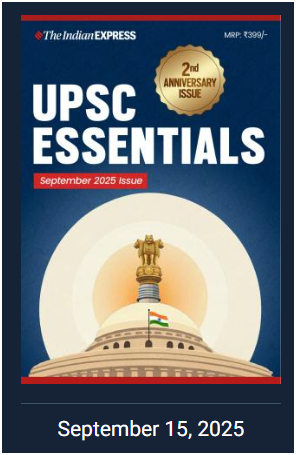
Read UPSC Magazine



- 01
- 02
- 03
- 04
- 05



